To be a better marketer, you’ve got to be someone who knows your audience to their core. A surface-level understanding isn’t enough—zeroing in on who they are, what they like and don’t like, and where they spend most of their time creates a fleshed-out avatar for you to work with. That in turn allows you to target the right social media influencers, podcasters, YouTubers, and website owners to collaborate with. I’m so happy to have Rand Fishkin joining me for a third podcast appearance…I might have to give him a special token or something! Rand is of course my co-author in the Art of SEO, and he is the co-founder and CEO of SparkToro, an excellent audience intelligence platform that you should all be availing.
In today’s episode, we dive right into the often-murky waters of Google, particularly the rising trend of zero-click searches. We talk about developments coming soon from SparkToro including a new press/media tab, and an “over-time” tracking feature to hone in further on your target audience. And of course, I always love to know what Rand is reading, which he shares with our audience today. So, if you’re wondering how you can have a competitive edge in business, tune in for some excellent market research analysis and tips straight from the source right here!
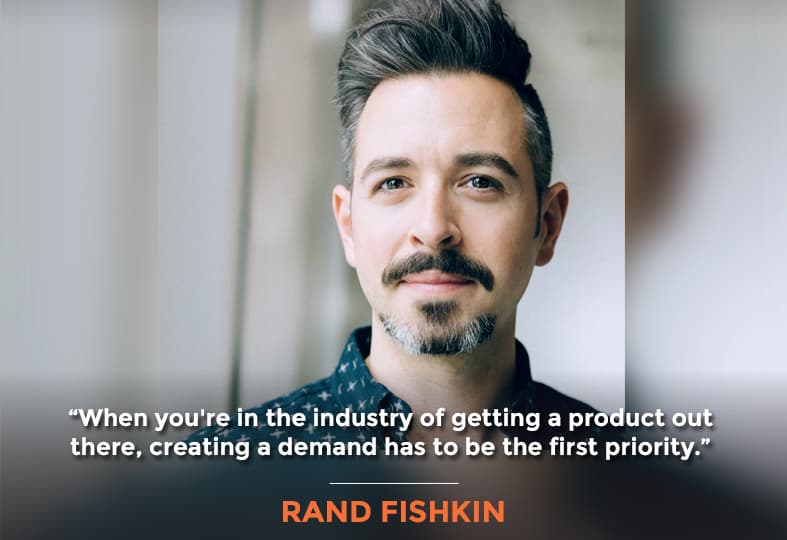
In this Episode
- [00:29] – Stephan introduces Rand Fishkin, the co-founder of SparkToro, a tool that helps others discover the websites, blogs, podcasts, social accounts, and publications that reach their audience.
- [06:52] – Rand explains why SparkToro stands out from all the other platforms that are being used today.
- [14:35] – Rand and Stephan talk about the use of SparkToro for analyzing audience insights and competitor research.
- [22:21] – Rand tells the challenge of formulating SparkToro’s demand generation strategy in creating awareness of the solution offered.
- [31:31] – Rand and Stephan discuss examples of using SparkToro to target niche markets.
- [37:45] – What is SparkToro’s Hidden Gems filter?
- [45:05] – Stephan and Rand share their opinions about the idea of Google having a competitor.
- [52:23] – Rand explains the reversal of the zero-click search trend that continues to rise over time.
- [59:00] – What are some of SparkToro’s cool new features to look after?
- [68:42] – Visit SparkToro.com to learn more about them and keep up with the latest news and updates.
Transcript
Rand, it’s so great to have you on the show.
Yeah, Stephan, great to be here. Always good to see you, my friend.
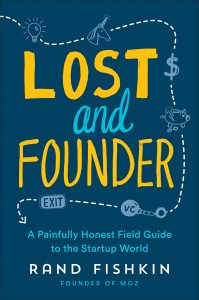
First of all, I want to let our listeners know that you were on my other podcast, Get Yourself Optimized. And we talked about your book, Lost and Founder, and some of the challenges you had, interacting, dealing with the VCs, who kind of muscled you out essentially, or kind of made life difficult for you?
My experience with Moz in venture was I regret taking venture capital. I think the VCs that I worked with were some of the best out there. If anyone would say, “Oh, well, which venture capitalist should I work with? I would say you should work with Michelle and Brad; they’re top of the heap. But it’s kind of a rotten heap. It’s not a great deal, not only for founders, but I think a lot of folks are waking up to this. For employees and team members, for a lot of businesses that come to rely on venture-backed companies, and then realize that being venture-backed does not mean you will be around for a long time. It means the opposite because 95 out of 100 of those companies go out of business real fast. I think they have a higher failure rate than restaurants do. It’s a little bit of an odd ecosystem in a whole bunch of ways with a bunch of seemingly unnatural behavior. I’m glad we got to chat about it because many folks can listen to that interview and take away the nuts and bolts and evaluate whether that’s the path they want to go down.
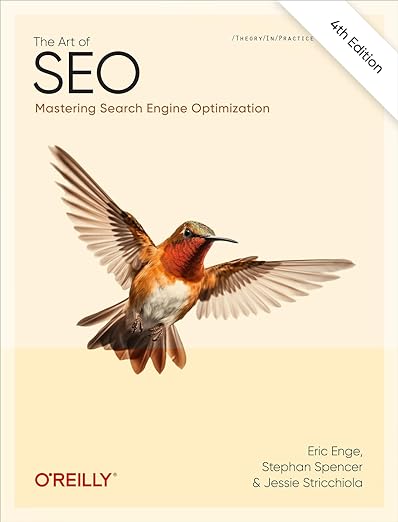
Right. Would you say that writing the book was cathartic for you?
So cathartic. Honestly, it was like a decade of therapy.
That’s awesome. How long did it take to go from start to finish with that book?
Let’s see, I pitched publishers in January of 2016, and the book came out in May 2018. So a little over two years. The writing process itself was about 18 months, and then there was sort of all the other things that go into a book. Penguin Random House was nothing like our experience with O’Reilly, which was very direct, very back and forth, very fast. PRH, much more like a Woody Allen writer movie from the 1970s. Very formal in a lot of ways. Fun and interesting to see but different.
Interesting. Speaking of O’Reilly, we’re now starting the fourth edition.
Amazing. I’m so glad to hear that.
It’s a long time coming. It’s been five years. The book will come out probably in early 2022. It’s gonna take several months to get the book done because we’re just starting now.
I have got to get myself a copy. So I can put it on the shelf behind here and say, “Look at this amazing book that I did not contribute to.”
Your contributions still live on.
I always refer people to it still because I think if you want to learn SEO, that’s the way to do it.
Thank you. A thousand pages here, there’s a bunch of content in here that is still from you. It’s a tried and true best practice that will probably live on into the fourth edition too.
Amazing.
I'm a big believer in organically building an audience who genuinely cares about what I publish instead of spending money on tools just to increase numbers on my online status. Share on XLet’s talk about SparkToro and social media and the kinds of capabilities that marketers now have with SparkToro that I don’t think existed before SparkToro. I always wax poetic about SparkToro.
You’ve been an amazing supporter and an evangelist for us. We can’t thank you enough. It’s been really interesting because we were sort of collecting a new kind of data in a new kind of way and then making it accessible in a new and different way, which has been fun and fascinating.
Let’s contrast a pre-SparkToro tool, with now having SparkToro. For example, Followerwonk, which is cool. I still use it but I definitely use SparkToro more often. Let’s say that I’m looking for journalists in a particular category, like online retail. I gotta put “online retail journalist” into Followerwonk and find people who have Twitter accounts, and in their bio have used those three words.
Yep. And you can do the same thing in Google, right? You can go “online retailer journalist site:twitter.com” and you can get pretty good results, right?
The difference is, with Followerwonk, it does isolate it to the bio on their profile.
It’s really strange that people go after a high follower account rather than the relevant audience.
Yeah, and very conveniently in Followerwonk, as well, you can sort by follower account, and you can filter on all these mechanics and those sorts of things. There are other tools like this; in the digital PR world, there are tools like Cision, Meltwater, JustReachOut, where you can identify journalists specifically. They’re big databases of journalists that are maintained. The challenge I had with all these products, and I know you have had this as well, Stephan. One, journalists aren’t the only people that we want to reach out to. If you are trying to reach your audience, you want to know all the places they pay attention to, not just “Oh, well, here’s a news publication that they read.” For example, I might want podcasts that they listen to, I might want webinars that they attend, I’m interested in YouTube channels that they subscribe to, I want to know all of the blogs and websites, whether they’re news and media or something entirely different industry publications, I want to know all of those.
Ideally, I’m not interested in the one that gets the most traffic or has the most followers. It’s almost like the Instagram influencer way of thinking about it. I always think that it’s really strange that people go after a high follower account rather than the relevant audience. So if I want to reach, let’s say, fiction authors, I have a new class, it’s specifically for aspiring fiction authors and existing fiction authors. Maybe I have a new journaling product. I don’t know what it is. But whatever we’re making, I want to reach fiction authors. I don’t care about being in USA Today, which has a large total reach. I care about, “Hey, what are the niche publications that fiction authors pay the most attention to?” “Can I find those?” And SparkToro works rather than having a database of journalists or sources of influence, it has a database of human being profiles, and then it says, “Oh, you want to reach these profiles? This is what they pay attention to.” And that methodology is what makes it unique from every other product on the planet.
SparkToro has a database of human being profiles, which makes it unique from every other products.
Right. In other words, if I wanted to understand what my audience is, let’s say, talking about a particular topic, certain keyword, or a certain hashtag or whatever, I can look at that audience in aggregate and see what podcasts they listen to, what YouTube channels they subscribe to, social accounts they follow, and websites they visit, all with SparkToro. And there’s nothing else that does that, correct?
So to my mind, we have been searching high and low because, in the startup world, it’s nice to have competitors because that means you have an established market. And I am not aware currently of a product that does anything like this. Right now, I think SparkToro is unique. I’m sure other people are doing it. I know that some big market research agencies do this on a custom basis for their customers. They’ll go take a database of, let’s say, we have a specialty food store online. We take a database of our customers. We give it to a market research search firm. They go plug those email addresses into something like Clearbit or FullContact, to get back all the social data, crawl all those URLs and figure out, what do people shop at random Stephan’s online food store? What do they pay attention to? Where can they reach more people like them? That’s a great methodology. It’s super valuable for us, and it’s probably going to cost us $50,000- $100,000 in six months of market research time. Casey, my co-founder, and I at SparkToro, we’re like, “Could we do that in three seconds?” Yes, we can do it. We just have to have a big enough database of all of the social profiles from LinkedIn, Instagram, Facebook, Twitter, Reddit, YouTube, Quora, Medium, all these places. So that’s exactly what SparkToro is. It’s a giant database of that sort of sample of all this data, as opposed to a custom one-off report for each client. And that has been working well.

It’s amazing. I love it. And any chance I can, I love to demo it because it’s not good enough just to show a screenshot or a report. It’s so powerful just to get the audience to participate and say, “Give me a keyword, give me a competitor URL or competitor social account,” and boom.
I’m always down to do the demos. I had some fun the other day on Twitter. I posted a short video where I had been explaining to someone who emailed me how to do a particular kind of SparkToro search. Then people were responding and saying, like, “Hey, could you find this audience for me?” So I filmed a couple more videos and posted those. And it’s fun, right? In two or three minutes, you can find, in this case, we were looking for executives at charter schools in the United States. How do I reach executives at charter schools? I’ve got this product for them. I think they were trying to do marketing of some kind. Where am I going to reach those folks at? And being able to answer that quickly is incredible. Because before this product is out in the wild, I don’t know how I would have done it. You Google around, and you’d sort of asking around, maybe you’d run some surveys, do some interviews, maybe you’d use that market research process, but it’s time-consuming and expensive. It’s just data you couldn’t have at your fingertips, and now it is.
Let’s go through a few use cases for our listeners of how they might use this capability. Let’s say that they are interested in getting on podcasts as a guest. Typically, what would happen is they might go to Chartable.com, they might go to the Apple Podcast app.
Listen Notes is a pretty good podcast search engine. I like that a lot.

Yep. They’re going to these different tools to see what podcasts are popular. They might search in a category or go peruse different category navigation to get into, let’s say, marketing-if they’re a marketing consultant or expert. So that’s one way of doing it. But another way is to see what the audience that they’re trying to reach. Let’s say that audience is maybe enterprise-level technology companies, or maybe it’s online, so they need to figure out what podcast would a CTO of a retail establishment be listening to? And I don’t know where I’d find that on Chartable or Apple Podcasts or anything like that, but I could do that using SparkToro, right?
That’s exactly right. You could go essentially to the tool and say my audience uses these words in their profile, which is one of the search drop-down options, and then you could type in “CTO retail.” And now you will find people whose bio includes the word “CTO” and the word “retail.” And you can see that Verner Vogel and Marc Andreessen are well followed by these folks, and the McKinsey Quarterly Audio show and This Week in Startups are well-engaged podcasts, the Speaking Business podcast, the Build Your Salon with Phil Jackson, the Film Stuff podcast. So yeah, this is a very doable thing.
That’s amazing, and you can see what percentage overlap there is between the audience that is built out of your search query inside of SparkToro, and that particular podcast or that particular YouTube channel, if you’re in the YouTube section of the report.
Right. So yeah, McKinsey Quarterly Audio is listened to by 14%, or it’s not we don’t know if they’ve listened to for sure, we know that they are engaged with one or more of their public profiles by 14% of this audience. There you go, reasonable thing. And then, a lot of the time, I recommend that people go dive into the tab called Audience Insights and check out hashtags that are paid attention to and used by this audience. So they might say, “Oh, yeah, I want folks who use the “#ecommerce,” or “#ecommerceandretail” and let me go see what they’re paying attention to. And you can get a little more complicated in your query structure too. It supports “AND”, “OR” a few Boolean queries, And then there’s also a comparison system. For example, you’re like, “Well, let me see what CTOs are like in retail vs. CTOs in eCommerce, and let’s check out the overlap Venn diagram of those two.” “Oh, they’re more different than I thought. Let me go analyze them individually.” That can be a good use case too. I don’t know-how in the world you would do this. This data must be such a pain.
Yeah. And you can do competitor intelligence or research as well. For example, let’s say that your top competitor. Let’s say you’re an SEO and your competitor is Seer. You could put in Seer’s website, as one of the pulldown options, there is “people who visit this website” and then put in the URL. Or you could say people who follow Wil, who’s the founder of Seer, you could put his Twitter account.
When you're in the industry of getting a product out there, creating a demand has to be the first priority. Share on XOr Facebook or his LinkedIn. Yep.
And that’s another thing too, you connect up all of their different social accounts across the different social platforms, whenever possible.
Yeah, so Twitter, you’re right to start there because Twitter is where we have the most information because that’s where the largest number of publicly accessible profiles are. But almost all the time, they’re connected to several other profiles. For example, when we look at Seer Interactive, you can go click on what they’re following, and you can see a lot of people who follow Seer Interactive, also follow and pay attention to Danny Sullivan, the public search liaison for Google. And SparkToro shows, it’s got his Twitter, official website, Facebook, Instagram, LinkedIn, YouTube account. For Search Engine Journal, it’s got their Reddit, Pinterest, YouTube, Instagram, LinkedIn, and all these different places. So yes, we will connect those dots, and there are two reasons for that. One is, you can often get interesting data that is in one profile that is not in another. If someone has something in their Pinterest bio or their Facebook about section, and it’s not in their Twitter, or it’s not in their LinkedIn, we’ll still aggregate that all together so that we can say, “Oh, these words and phrases apply to this person’s official sort of presence online.” And that wealth of data that you can get from public profiles across platforms is really valuable.
So we’re just on the verge of adding a lot more LinkedIn data, probably beginning of January. And then next year, we’re going to be adding a lot more Instagram. Instagram has been a funny one because, I’m sure you know this, there’s this whole world of Instagram influencers, and one of the things that we did not want to do with SparkToro was get pigeonholed into, “Oh, you help with Instagram influencers and influencer marketing.” We did not want to be in that world. And so, at launch, we intentionally focused on other networks. We have data from Instagram but other networks. So SparkToro has not been a great place to find sort of influential Instagram accounts. I think next year, and we’ll probably be launching a tab that is specifically about what and who do people follow on Instagram who matched the criteria of your audience, and then you can do targeting there.

That I think is important, especially because if you’re doing Facebook advertising right now, they keep pulling back more and more data. Like if you go into the Facebook Ad interface, and well, it’s better than anyone, but they’re taking away all of your different options for targeting. What was there two years ago, three years ago, especially before Cambridge Analytica, holy crap, right? They had all these different ways that you could target people. And so now, in Facebook advertising, if you want to reach an audience that is exactly the customers you want to go after, it’s a royal pain to get that audience nailed. And I think that one of the things SparkToro can do is help to eliminate which accounts those are because that’s still an option for you in Facebook ads is to say, “My audience follows this on Instagram. Show my ads to her followers.”
Right. And another thing too, that is important that relates to this connecting up of different social accounts across platforms is you aggregate the numbers of the people that they reach. You can sort by the highest reach in a report and see that “Oh, this person might be huge on Twitter, but they’re nowhere on Instagram,” they’re just tiny or vice versa.
Yeah. You can export that data, and you’ll get like a giant XLS or CSV with all the columns of all the following data, and then you could decide and filter even inside the tool. If I hop over to social, I can filter based on, for example, “I only want social people who have social accounts on GitHub,” maybe if you’re in the CTO engineering world, you might want those. Or if you’re in the website’s tab, you could filter on, “Oh, I want to filter based on domain authority, the Moz score,” or “I want to filter based on showing me the popular accounts that everyone pays attention to versus not,” that kind of thing.
Yeah. Now, would you give a name to this sort of category of product? Because like social listening as a category, or product, or social monitoring, but what is this called?
This is a great, phenomenal question. When we were creating the company, while Casey was building the product, I spent the first 18 months doing market research and trying to understand our field kind of thing. It is the weirdest thing in the world. SEO is really clear. So SEO, as you say it, everybody knows what it is, “I’m trying to get rankings in Google.” This process, which we have been calling “Audience Research,” or “Audience Intelligence,” this field, if you say, “Audience Research” or “Audience Intelligence” to someone, they’re like, “What the heck is that?” And that’s kind of the best we can do, because when we say, “Hey, how do you go about figuring out what your audience pays attention to, what podcasts they listen to, what websites they visit, what social accounts they follow?” Everybody said, “Oh, I do that work, but I have no word for it.”
So that makes categorization challenging and difficult. I think we’re essentially trying to category create, even though there’s no doubt in my mind, this is a practice that’s been around since the 1950s. People in advertising and marketing have constantly been trying to figure out what does my audience pays attention to? Where can I reach them? I think for most of the 20th century, this was done in a very blunt force demographics the only kind of way, right? Not to rag on the 20th-century advertising world, but a lot of it was “CTOs are,” “this gender,” “this race group,” “this demographic group,” “this age group,” “this income group,” “let me go find publications that reach those demographics, and that’s where we’ll do our advertising.” But you know, it’s just awful in terms of targeting, right?

Yeah. But what’s interesting about this situation, it reminds me of a blog post you wrote a little while ago about demand generation and how very few people were searching for Mr. Rogers, but there was a pretty steady audience of that year, you know which blog post I’m talking about that you wrote, right? And then you wrote about in the article how this documentary about Mr. Rogers’ Won’t You Be My Neighbor? So people started searching for Won’t You Be My Neighbor? And the search volume for Mr. Rogers picked up, but nobody was searching for Won’t You Be My Neighbor? Until the movie came out. And so that generated all this demand. And what you’re doing is kind of a parallel here and is creating demand for something people didn’t know they needed or was even possible.
Yeah. And I think that’s one of the harder things to do in the marketing universe, as opposed to serving existing demand. So I want to rank for these keywords that people are already searching for higher than my competitors so that I can attract people who want those products or services. More difficult is saying sort of, “Hey, there’s a product or service that previously either didn’t exist or did exist, but people didn’t know about it, and they didn’t know they should want it. And so, how do we create demand for that? If you told me in January of this year, “Hey, you need to get an N95 mask.” I’d have been like, “Do I know what that is? Is that a medical thing?” or “What is that?” But demand has been generated.
Creating demand requires knowing where you can reach the people who will be interested your the product.
Am I gonna be sanding something, and I don’t want to breathe in the sawdust?
“Is that construction or the doctor’s office? I don’t know.” But now there’s that sort of demand. Funnily, there’s a big parallel with how SparkToro helps and what it’s doing on that front. Because if you are in a space where there’s already a ton of demand happening, people already know they want your particular product, the search is a really good way to go after that. Search is a primary channel for that. However, if you’re in the world of “How do I figure out where to reach? How do I take this new product and get it to market?” You need to create demand. That requires knowing where you can reach the audience of people who will be interested in the product. I think that’s a problem I’m very excited to solve.
I’ll be honest, Stephan, I’m very excited to solve it without just pouring money into Google and Facebook. It would bring me great joy to think that SparkToro is a product that people not only use and find valuable but also that the end result outcome of people using it is that more of their marketing efforts and advertising dollars and partnerships and co-marketing and whatever podcast guesting and all these kinds of things happen in the niche sources of influence on the web, happen in press and media, happen in blogs, happen on podcasts, happen on YouTube channels, rather than “Well, I don’t know how we’re gonna reach this audience. I guess we’ll just bid on the Google Display Network. I guess we’ll just bid on Facebook and Instagram, and I guess we’ll just bid on YouTube ads.”
Google and Facebook continue to control more and more of the market.
It’s not quite spray and pray, but it’s kind of like dump your wallet out and pray.
It is. Google and Facebook continue to control more and more of that market. And that is about to accelerate at an even faster pace as Chrome. I think it’s by 2022, so sometime next year, they’re gonna get rid of third party cookies, which Apple and Facebook have this big fight right now. I don’t know if you saw Facebook taking out these like full-page ads and all these US publications complaining about how Apple was hurting small businesses by making Safari cut-off third party cookies and accepting consent from Facebook, blah, blah, blah. And it’s ridiculous. I don’t think anybody believes Facebook at all, but regardless.
I feel so sorry for Facebook.
I know. It must suck to run the world and be incredibly rich and powerful. It’s just so hard on them. But the end result of this is going to be that, essentially. If you are not in their ecosystem, if you’re not participating in the Facebook advertising or Google advertising game, you will have even less opportunity to reach your target audience. And they know that, and in many ways, they’re happy about it. They lobbied and crafted a lot of GDPR and the California privacy laws to, frankly, bias this regulation toward them so that they reap a ton of benefit from this. The tough part about that is the more people that bid in an ecosystem, so if Facebook has a million advertisers, each ad slot reaching a new person costs more, and when they have 10 million, that number goes up, when they have 50 million, it goes up even more. If you say I want to reach this audience through Facebook’s advertising network, and 50 other advertisers are going after it, the number that you’re paying is just so much higher.
If you are trying to reach your audience, you have to know all the places they pay attention to. Share on XEssentially, all of the net margins that come from reaching customers pour into Google and Facebook. I think that’s wrong. I think it’s fundamentally unfair to the market to control all this advertising, not through the genius of your technology, but rather through the power of your regulatory influence and your rent-seeking behaviors and all the bad things that monopolies do in an economic ecosystem. And it sucks as just a small business or medium business to say, “Well, I feel like I have no choice. I can’t go and sponsor the Marketing Speak podcast because I don’t know if they reach my audience. But I know on Facebook, if I put a bunch of money into there, they’ll figure out the right people to target. So I guess I’ll do that.”
Yep. Or Google. If you want to just spend money on Google ads. Here’s an example, let’s say that you are selling sunglasses online, and you want to bid on sunglasses or some similar kind of keyword. You might spend 10-20 bucks per click.
Yeah.
Let’s say it costs you $800 to sell one pair of sunglasses. That might be a hundred bucks. That’s crazy.
That’s exactly the world that we’re heading toward, which is why you see so many advertising games being entirely saturated by a lot of venture-backed companies that can afford to lose money until they gain market traction. The sunglasses is probably a perfect example. But something like, I don’t know if you read some of the stories about WeWork recently, but WeWork is a great example of this. They essentially sold or rented out office space at lower than market rates. They go into a market. They look at what the independent small co-working spaces offer. “All right, we’re gonna undercut that by 25%. If they bring their price down, we’ll undercut it again. We don’t mind losing billions of dollars a quarter in every city across the world on this because, over time, we will make it up in volume.” And then, when they all go out of business, they will jack up the rates so that we can be profitable again. That business model is very hard to compete with if you are not backed by SoftBank. Very difficult, and this happens in a lot of different fields. It happens in niches in eCommerce, and it happens in a lot of private equity-backed markets.
Well, it doesn’t just happen because the VCs are out there funding this stuff. It’s also happening because Amazon is in pretty much every space, and they want to buy positions for everything from sunglasses to N95 masks.
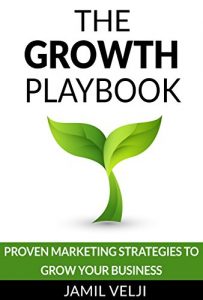
Yeah, that was their whole playbook, right? The Growth Playbook at Amazon. For most of the 2001 to 2012 era, Amazon was the cheapest place to buy things online. And then, once they became a habit, they became one of the more expensive places to buy things online. I was just on Amazon last night looking at some specialty pantry ingredients for Japanese cuisine, I’ve been cooking a bunch of Japanese food lately. And they’ve got a nice selection, and they can deliver it fast. It’s in my Prime account, super convenient in all these different ways. But then I go to the Japanese specialty foods website. I think it was SF Mart, which I’m sure you’re familiar with if you’re in the Bay Area. Like, “Oh, they have that same fancy soy sauce for a third of the price. What the heck, Amazon? How are you charging?” It’s because I don’t know what the price should be. And Amazon is counting on me to just take the default behavior, which is add to cart, checkout. So easy, right? As opposed to, “Hey, maybe I should check and see if they’re charging me a reasonable rate for this stuff. A little box of Miso paste was 15 bucks. And I was like, “Gosh, it looks familiar. I think that’s at my local grocery store, where it’s only $4.95.”
It’s like airport pricing. It’s like, “I’ll get that water for ten bucks.”
Amazon counts on you not doing the research step because you’ve been trained over the last decade and through your Prime account that it’s just more convenient, easier to deal with Amazon, and so they can jack up those prices. That’s the reality of living in a late-stage capitalist world. But as an advertiser or as a small and medium business, you can end around a lot of these options by saying, “Okay, where did Rand and other consumers like him learn about Japanese cooking?” “Oh, justonecookbook.com. That’s where a lot of people talk about Japanese cooking, that’s a website that is popular with them, that’s a social account that’s popular with them. Could we do some advertising and marketing there so that before Rand goes to his Amazon account and starts searching around for this stuff, he sees SF Mart’s ads, or he sees the promotion of the co-marketing arrangement between Just One Cookbook and SF Mart, and they’ve created a relationship? Maybe that is a way to do it. Maybe we could create a page that ranks on SF Mart that compares Amazon’s prices against ours with some of the key Japanese pantry ingredient prices.” All sorts of marketing options if you know where to reach your customers.
Amazon has trained you over the last decade that it’s more convenient and easier to deal with Amazon.
Cool. Another example, let’s say that you’re trying to reach people who read the Robb Report, high-wealth individuals. What are they doing online? What social accounts are they following? What podcasts are they listening to? What YouTube channels are they subscribed to?
I haven’t tried that one yet. But I’m gonna try it right now because this is a very difficult audience to reach to.
You can reach them in multiple ways through your tool. For example, you could say, let’s put in the Robb Report’s Twitter profile, and find the audience that follows that Twitter account, we could put in the URL of the Robb Report and say, websites that are visited by those people, we could put in just the phrase “the Robb Report” and build an audience of people who are talking about the Robb Report, we can see that they’re using a hashtag, #RobbReport. And then to those people who are, let’s say, participating in that online community, and use the #RobbReport, and we’ll send some free swag to some of you over the holidays or whatever. There are lots of different ways we could reach those kinds of people.

Yeah, this is fascinating. I don’t know these other brands, but 25% of the people who read the Robb Report or engage with them on one or more social channels follow this luxury society, which has a website, a popular Twitter account, they’ve got a big Facebook presence, we have their Vimeo page, which has a lot of followers on Vimeo of all places. And then LUXUO, which is like luxury news, Departures.com. I think I’ve heard of Departures Magazine.
Yeah, I get that. Throw it out as soon as I get it.
W Magazine, Architectural Digest, Just Luxe, Harper’s Bazaar, so you get this kind of profile of the audience through the sources of influence that they pay attention to. I think it’s a fascinating discovery process to then realize how big your marketing opportunities are compared to the sort of very narrow niche of “Oh, I want to target high net worth individuals and luxury buyers on Facebook and Google,” which that’s one of the most expensive audiences you can reach, right?
Yeah. Now you got this something that you call “Hidden Gems.” Let’s talk about that in relation to the audience who follow the Robb Report.

Sure. At the top of any search that the things that we show are default ordered by the percent of the audience that pays attention to them. So in the case of the Robb Report, the biggest overlap is with Condé Nast Traveler, where it’s 36%. So it took 36% of social accounts across these ten social networks that we cover, who follow the Robb Report, or engage with them, also follow or engage with Condé Nast Traveler. So that’s a big percentage. If we go into the filters, so Casey and I, in early conversations with lots of folks like yourself, marketers who do this work daily, they kind of told us, “All right, in many sectors that I know, well, I already know the big players.” Like if you search for SEOs and you show me, Danny Sullivan, and Google Search Console, and Dr. Pete, I know those people. Show me the hidden gems, who are the people in publications that I maybe have not heard of that are reaching a substantive group of these individuals. So we created this filter called Hidden Gems, which essentially shows relative high-engagement to their size of following or size of audience, but doesn’t have the largest necessarily percent of audience. When we do this in Robb Report, instead of Condé Nast Traveler, Travel and Leisure, Luxury Society, and NatGeo Travel being at the top, if I say show me only the gems, it will filter to those high-engagement, lower total follower count ones and that includes new publications.
Publications like I am not familiar with, one is Luxury Daily, Luxury Travel Advisor, ILTM. I don’t know what ILTM is. Stacy Maui. Telegraph Luxury, I think that’s the British brand, Eat Love Savor Magazine, Christine Kirk, Bloomberg Pursuits, Andrew Harper’s Hideaway Resort. I’m not familiar with all these publications, but a whole bunch of people and publications that reach 7, 8, 9, 10% of the Robb Report’s audience, but they don’t have hundreds of thousands, millions of followers and audiences, they have tens of thousands, and most of these are 60,000, 90,000, 58,000. But those might be niche opportunities for marketing of all kinds that could be less expensive. In most cases, when I run this Hidden Gems filter, I find sources of influence that are far more reachable. In SparkToro, the way it works is you just check a bunch of them, create a list, and then when you go to your lists, we have a partnership with Hunter.io. So we’ll grab all the email addresses associated with a publication. So you could go and say, “Oh, well, yeah, Stacy Maui. That sounds interesting. Let’s add that to a list, and then let’s see if we can find the email addresses associated with that account in that domain.” And you can go do whatever kind of contact you want. In this case, it might pay more to send an Instagram DM, but we have that contact info as well. And the return on investment from going after smaller publications, more niche social sources.
The goal for businesses should be to get their products out there without relying too much on Facebook and Google. Share on XBloggers, influencers, and so forth.
You just get a much higher rate of return. People will answer your emails, and they’ll say yes to having you as a guest. When you email Travel and Leisure, it’s a tough pitch, right? They’re getting pitched by a lot of people and all these PR folks who have relationships with them already. But you reach out to. I don’t know, ILTM, you have a decent shot at getting some placement there.
For sure. You said that you look for high engagement relative to the audience size that they’re reaching, is that, in other words, high SparkScore?
Yes, SparkScore is part of that.
Let’s describe SparkScore to our listeners if they’re not familiar with it.
Sure. So SparkScore is like a free tool that you can use if you’re interested in sort of analyzing the true influence of any Twitter account. We only have SparkScore publicly for Twitter right now. Inside of SparkToro’s primary product, we will look at engagement across social channels. So it is not Twitter exclusive, but SparkScore does makeup one element of that. An engagement we’re essentially looking for when, whatever it is, Stacy Maui posts on Instagram, does that get a relatively high number of likes, comments, video views? Whatever kind of metric you can see on the platform, Pinterest pins, or YouTube views, whatever it is, subscribers, do they have a relatively high percentage of those engagements for their audience size? So if I have 10,000 followers on Twitter, and I get ten retweets, on average, on my tweets, that’s pretty good. Like, that’s decent, that’s gonna be above the median for people who post. If I have 100,000 followers and I’m getting ten retweets per tweet, not as good. My engagement rate is going to be lower. So that’s how essentially, the engagement ratio is calculated inside SparkToro. We’re looking for accounts that maybe don’t have the total audience size that’s huge. But when they publish things on their channels, they’re getting very good engagement.
It is certainly fascinating to imagine a world where there are all these new search engines coming out.
Very cool. Let’s talk more generally, and we’ve been talking a lot about SparkToro. Hopefully, by now, everybody has signed up. Now let’s talk about where things are heading in terms of social media, where things are heading in terms of SEO. Let’s prognosticate for a bit.
Oh, I like it. So the social media one, I can’t figure out whether new services like TikTok, Snapchat is older but still sort of an emerging social media player and others, I can’t decide if that niche fragmentation trend will continue, or whether it’s something that does well with a sort of particular demographic but never breaks out into a larger world. And I am not sure whether that’s the case. I think that there’s also the complication with TikTok around government regulation and fears of Chinese ownership and all those kinds of things. But it is certainly fascinating to imagine a world where there are all these new search engines coming out. There’s one that’s backed by the ex-Salesforce team, Marc Benioff. There are all these promises of, “Oh, well, maybe someone will try to compete with Google.” I don’t know. I mean, Stephan, what do you think? You know search inside and out. Do you think someone can build a competitor to Google?
Only when the AIs come and rule the world. I think once we have autonomous general intelligence, they’ll be way smarter than us. They’ll build another Google killer.
Maybe. It just feels to me like the big roadblock with Google is they have 20 years of data about what people searched for, what they clicked on, what they bounce back to the SERP and chose a different result, where they changed their search query from this thing to “Oh, actually, that my question is this.” And I feel like that historical data, SERP interaction data, if you will, is such a phenomenal barrier to entry that without it, you can’t build a search engine that’s half as good. And I don’t know. Maybe some new paradigm in search could change that.
Maybe a quantum computer with advanced artificial general intelligence that’s ten thousand times smarter than a human and is able to out-think us and fractions of a second.
I feel like all artificial intelligence, at least today, is built on historical data.
I feel like all artificial intelligence, at least today, is built on historical data, right? The whole process of AI is you take data, and then you machine learn against that data to extract patterns. Nobody except Google has the patterns. Nobody has the data to analyze. How do you build a smarter AI without the input? That feels like it’s the missing piece. Unless you know what people have looked for and been satisfied with in the past, you can’t build a better one. Even if you had a much faster computer, and your AI and machine learning algorithms were a hundred times better than anything Google has. So what? Your data is not as good as their data, and that the data is the key.
But couldn’t you go directly to the data? Let’s say GPT-3. Let’s use that from OpenAI. It scours the internet, and has all this data of human knowledge, and is able to write a poem about Elon Musk, for example. Have you read this poem? It’s pretty funny. It’s hard to believe that an AI wrote this poem. It’s pretty darn good. I’m going to read a few lines from the poem.
I feel like I saw Brittney Muller share this. Because I know she’s deep in the AI-ML world.
Okay, I didn’t learn about it from her. But anyway, here are a few lines. The instruction to GPT-3 was to write a poem in the style of Dr. Seuss about Elon Musk launching rockets with SpaceX building electric cars at Tesla selling flame throwers, dating Grimes, fighting the SEC, crushing short-sellers, and building brain ships. Okay, so here’s one of my favorite stanzas. “Then Elon Musk said, ‘You’re not much fun,’ and I don’t want to sue, but I’ll tell you what I’ll do. I’ll send my Mars Rovers to Red Planet you.” GPT-3, wrote that. So if GPT-3 can do that, based on its understanding of how we write and how Dr. Seuss wrote and all these different activities that Elon Musk is part of and how he thinks and everything, why can’t something like GPT-3 just sidestep the whole requirement of having a lot of data about user interactions and just scour the internet and decide like, “Yeah, this is the best poem on the internet about the SEC.”
You don't want the most perfect content. You want the content that will best answer the searcher's query. Share on XSure. Here’s where I feel like you want to call the metaphor for these things falls down, which is GPT-3 can learn an incredible amount from what people have created, right? So it’s incredibly smart or sophisticated, based on the inputs that it’s got, it takes a repository of billions of web pages and all these books, which is great. What it doesn’t have is it does not know what people have searched for in what quantities and what they were satisfied by in the query response and not satisfied by, right? So the missing element is when your question answering, you don’t necessarily want the most relevant content, or the most thorough content, or the most topically modeled perfect content. You want the content that will best answer the implied searchers’ query, which is not necessarily contained in their word, right?
If they go, “N95 v KN95,” well, what did they mean? Google knows that an article that analyzed 12 different kinds of masks, including those two different kinds that were relatively recently published, has not been particularly well linked to yet, but that uses a methodology that solved a lot of people’s problems in the past. And it’s from a publication that people have trusted on previous versus queries around health topics. That’s the one to put number one. Google knows that from the historical data. Is GPT-3 or something like that going to be able to figure it out without that historical data? I guess the answer is maybe. It’s always possible, but I think it’s going to be a huge stretch without that historical data. So call me a pessimist.
You’re an optimist from Google’s perspective.
One of the trends that reversed for the first time in a decade is less mobile usage and more desktop usage.
That’s true. They like the way I think. I would say I think that in the SEO world, as far as predicting around that stuff, one thing that was fascinating about the pandemic was the–you and I are both on whatever desktop-laptops right now. But desktop-laptop use because of the pandemic grew dramatically. So one of the trends that reversed for the first time in a decade, 15 years, is less mobile usage, more desktop usage, which meant a reversal of the zero-click search trend because on mobile, people who searched Google don’t click, right? They sort of stay in Google’s interface. They try and get an instant answer. Google does all these things on mobile to keep you up in their SERP.
On a desktop, they do some of that too, but less, and people are much more likely to click on things on their desktop or laptop. And so I think that this year is going to be sort of like an oddity in the ever decreasing click-through rate and the rise and zero-click searches. But we probably will see that emerge again. I don’t know next year, 2022, whenever vaccine rollout gets completed. At that point, I think there’ll be more fear and concern again about the “Oh, man. I can rank number one for a million search terms. And I’m still getting less traffic than when I was ranking number three, three years ago. What do I do about that?”
Yeah, so the zero-click search is a trend that’s going to continue to rise over time, as your prediction. And that’s not good for marketers. It’s good for Google.
Very good for Google.
Yeah, it keeps them in the ecosystem and keeps those users in there. And does that reduce the utility of Google for users, do you think? Or are people happy to just get an instant answer and move on with their life?
Yeah, I think people are really happy to get that instant answer, stay inside Google’s ecosystem, but it’s very frustrating for a marketer. Because you are, what all of us are doing, creating content, answering searchers’ questions, researching what our field wants, making that stuff, publishing it, and then letting Google crawl it for free, which costs us bandwidth technically. A few pennies every time Google comes to our site and does a big crawl. We’re paying for their bandwidth to crawl us for free so that they can steal our content, attributed to themselves, publish it on their own google.com and give us no benefit from that. That benefit gets less and less over time as they send less enough traffic out and keep more of it for themselves.
What’s not to like about that?
I mean, that’s a long term ecosystem risk. Frankly, one of the reasons that I have done two things; one, started a company that is not in the SEO software space, and two, done less and less of my marketing through search rankings and sort of content that ranks in search engines; because of that trend. I’m a big believer in an audience that cares about what I publish in and subscribes via email, subscribes to my blog, follows me on social channels. As opposed to putting all my eggs in the content in the SEO basket, which is most of what I did at Moz. That’s an intentional move. I feel like many more publishers are going in that direction. This is part of the rise of things like Substack, and before it, Medium, where folks are trying to get at podcasting, the rise of podcasting is, “Hey, let me build a loyal audience that loves hearing from me that wants each episode, rather than trying to earn everyone’s click in the search engine.”
What do you think of Substack, by the way, since you brought it up?
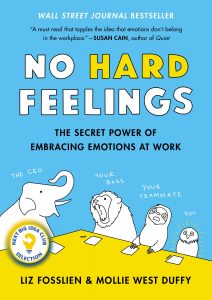
Yeah, I think it’s an interesting option. I see why it has become popular. I would also prefer to build it myself. I would much prefer to own the ecosystem rather than have Substack control the environment around my email list and newsletter and those sorts of things. Easy monetization is a very nice feature. I appreciate that as well. It feels a little bit like Shopify to me. If you can manage and build your eCommerce store, you can save yourself a lot of money. You can do a lot more customization. You can be more on the cutting edge of all the marketing tactics. But if you need someone to easily outsource it to, this is a nice option. That’s kind of how Substack feels.
Have you looked at it from an SEO perspective?
No. Is it terrible?
It’s atrocious.
I bet. I never see it ranking. Like I haven’t seen any Substacks in the SERPs.
It’s a trainwreck. Anyways, where do you see SparkToro going in the future? I’m curious in particular like you mentioned, you’ve got a partnership with Hunter.io. You see, potentially working in partnership with something like the likes of Pitchbox where you can do full outreach and not just get the email addresses, but do the outreach to these influencers and podcasters, and so forth.
If I had to guess, I would say it’s more likely we’ll pursue other things before that. The reason being the way we are conceptualizing SparkToro, and the way we’ve been sort of building and marketing it is as a research tool. It’s got all this data about your audience that you can use for advertising, digital PR, outreach, pitching, SEO, content marketing, and all that kind of stuff. But we are finding that there’s a lot of broad use cases. So we’re not necessarily going super deep on one particular angle, like outreach exclusively. I think it’s very probable. We’ve been talking to a few folks like JustReachOut or Pitchbox or other folks about using our API. So I wouldn’t be surprised if those sorts of services use SparkToro to get the percentage audience numbers and show that data inside their products. I think that’s a great way for us to go. We want to be the best place to get this data, and we want to stay laser-focused on that data side.
Two things that are coming very pretty early next year. One is a new tab in SparkToro, that is Press/Media. You’ll have a specific tab where, “I want to know which big and medium-size press publications, everything from the Robb Report to Washington Post New York Times,” like, “What in that world does my audience pay attention to if I want to do sort of that media relations, PR advertising game?” So that’ll be a new tab in there. And the second one, that’s pretty big, is Over-Time Tracking. If you were to say, “Oh, that CTO audience” or “people who use the #ecommerce,” or “architects in Los Angeles,” or “executives or charter schools,” like “that’s my audience, and I’m always going to be targeting them. So every two weeks, I want you to send me an update about new things they’re paying attention to, new hashtags they’re using, new words and phrases they’re talking about, new ways they’re describing themselves, how that audience size is changing. I want all that detail. I don’t care so much about pitching a new audience every few weeks. I care about this one audience and their changes in behavior over time.” So that audience tracking will be something that we will probably have, hopefully, Q1. Those are the big things.

Okay. And we’re recording this on December 23rd, 2020. So when this episode airs, it’ll probably be February by then.
Excellent. So some of this stuff might be out by then. We’ll follow up, and then I’ll send this episode to Casey and be like, “Hey, I promised the people.”
“We got to tell them we delivered already in the show.” Awesome. Now let’s just do a little kind of a lightning round for just a couple of minutes.
Okay.
Did you see the movie The Social Dilemma? And if so, what are some quick thoughts about it?
Oh, I’m a huge Tristan Harris fan. I love everything he does. That being said, I thought the movie was more biased and sensationalist than it needed to be. I thought they could have done an even stronger job by being more balanced.
Yeah, I agree. And BJ Fogg is a friend of mine. They portrayed him as kind of the devil in that. They took that out of context. He was talking to health professionals at a conference, and it wasn’t marketers or Illuminati or anything that he was talking to. It’s not cool that they positioned him that way. Okay. Next question; TikTok or Instagram Reels?
If you’re over 25, Instagram Reels. If you’re under 25, TikTok.
Okay. Do you have a TikTok?
Nope. I had it briefly. I deleted it.
Okay. Why is that?
I read that post that went viral on Hacker News. I think it was last year, about the data collection of TikTok versus Facebook. And they were sort of like, “Look if Facebook scares you about what data they collect in the background. TikTok should scare you 100 times more, and here’s why.” I read that, and I was like, “Oh, that is a good point.” If you sort of look in the app, you’re like, “There is no reason for this. It is keystroke logging, everything. That’s uninstalled. Goodbye. I don’t need keystroke logging.”
What do you tell people in response when they ask you about, “Is Facebook spying on me? Is it listening to my conversations? Because I have a conversation about XYZ and then suddenly I get ads about XYZ.”
I tell them it might as well be whether it is or not. I believe Facebook when they say that nowadays, the microphone is not picking up everything you say. However, human behavior is predictable if you get enough quantity of it. Just like we were talking about machine learning and artificial intelligence. Yes, the fact that you are discussing bird feeders, and also you live in this neighborhood at this time of year, and you already bought something for a garden. That’s why bird feeders are showing up. The fact that you are discussing it now because you heard birds yesterday morning, and they woke you up. It’s not coincidental. It’s just statistically significantly correlated. And therefore, Facebook knows to show you those ads.
Make sense. Okay. What’s your favorite book, fiction, and nonfiction?
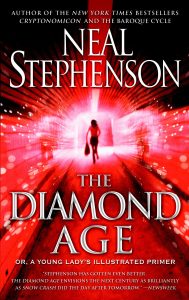
Gosh. Nonfiction, a recent book that I loved. Have you checked this out? No Hard Feelings.
No.
I love this book. It is so delightfully well written, and it has a bunch of fun illustrations and stuff too. If Twitter is how you consume memes about business, No Hard Feelings is flawless in a lot of ways, and it’s a great book too about bringing your emotions to work and not having to hide who you are. So I love that. Fiction, oh gosh. You know, a book I recently revisited that I thought was amazing was Special Topics in Calamity Physics. I love that. It was a novel from a few years ago. And it’s about a young woman. I think a teenager. It’s a mystery. It’s fun. Well done.
Very cool. Have you read The Diamond Age by Neal Stephenson?
No.
Oh, that’s a good one. That’s my favorite fiction book. It’s in the age of molecular nanotechnology, so probably 20 years into the future. It’s great.
Cool.
And my favorite nonfiction book is Freakonomics.
That’s a good one, too. I think that’s on my shelf. It’s right over there.
Very cool. This is gonna be the last one. What is the highlight for you of 2020? Like what’s been a moment of great insight or a magic moment that happened that you want to share as the last thing?
Let’s say I will say two moments. One was in September, SparkToro went from losing money every month to being profitable. That’s huge for us. It gave us an infinite runway and the ability to make a whole new set of strategic and tactical decisions. It was very exciting, especially considering earlier in the year when the pandemic hit. It wasn’t that the company was a bad idea, but our timing was going to kill us because we hadn’t launched before the pandemic hit. So that was a big one for us professionally. And then, I’ve been quarantined with Geraldine for ten months, almost exactly now, and it’s not that bad. It’s not just that we love each other and care about each other. It’s also that; apparently, we can spend every day together for ten months and not get too sick of each other and do okay. That is pretty damn amazing because I have talked to a lot of people who are struggling at home with romantic partners, kids, roommates, or by themselves. And I feel like we are just some of the luckiest people in the world on that factor.
That’s beautiful. And it’s not luck, it’s good fortune, it’s the Divine timing or serendipity or something more than just random luck.
Good decision making in choosing a great partner and then putting in the work too. I think a lot of people mistake love, especially long-term love, as being something that you like to fall into or it happens, and it’s mystical and inexplicable. And I don’t think that’s true. I think I think love is an active effort that you put work into just like you would a job, just like you would a hobby, and when you make investments in that love, it pays dividends in love back from your partner. And Geraldine and I both have been putting in work and getting dividends back from that.
That’s beautiful. Love is a verb.
Love is a verb. Thank you. Excellent.
One thing my wife and I do every day, not quite without fail, but I’d say certainly nine times out of ten, is we end our day with at least three appreciations for the other. We do that before we fall asleep, and it makes a difference.
That’s a great idea, Stephan. It’s that habit building. It seems small, but the older you get, and the more time you spend together, the more those practices build on each other. I think that’s beautiful.
It’s a great way to end the day, and then the way that I start my day is, I don’t always do this again, but I try to do it most of the time. As soon as my feet hit the floor, getting out of bed, I say, “Today’s gonna be a great day.” I learned that one from BJ Fogg. It’s called the Maui Habit, he gave it the name the Maui Habit, and it makes a huge difference. So try those two things.
Okay. I will.
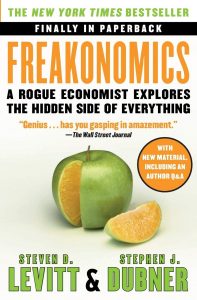
Well, I appreciate you, and I appreciate all the wisdom and brilliance that you bring to not just this podcast but to the world, not just the SEO and social media industry, but to humanity. So thank you for that.
Well, right back at you, Stephan. It is always a pleasure to talk to you. Thank you so much for having me on.
Yeah, thank you. Now, listeners, you got to go get a SparkToro account, you can get one for free. Rand, do you want to say something about how you can use SparkToro for free and not even pay for the account?
The overwhelming majority of folks who use SparkToro, even a ton of those people who talk about it and broadcast it or use it for free, you can go to SparkToro.com, start searching, sign-up for a free account, run ten searches a month for free forever. We’re very excited about the fact that tens of thousands of marketers are getting tons of value from it without paying. I have no problem with that. I encourage you to do that. If it’s helpful and useful to you and you want to do a bunch more, obviously there are paid plans too, but you don’t need to. We’re thrilled to just provide this data.
Yeah. That’s amazing. All right. Well, thank you, Rand. And again, SparkToro.com, check it out.
Important Links
- Twitter – Rand Fishkin
- LinkedIn – Rand Fishkin
- SparkToro
- SparkScore
- Demand Generation – SparkToro Article
- Zero Click Searches – SparkToro Article
- Moz
- Lost and Founder
- The Art of SEO
- The Growth Playbook
- No Hard Feelings
- Special Topics in Calamity Physics
- The Diamond Age
- Freakonomics
- Rand Fishkin – GYO previous episode
- BJ Fogg – GYO previous episode
- Penguin Random House
- O’Reilly
- Woody Allen
- Followerwonk
- Cision
- Meltwater
- JustReachOut
- Clearbit
- FullContact
- Chartable.com
- Apple Podcast
- Listen Notes
- Verner Vogel
- Marc Andreessen
- McKinsey Quarterly Audio
- This Week in Startups
- Speaking Business podcast
- Build Your Salon with Phil Jackson
- Film Stuff podcast
- Seer
- Danny Sullivan
- Search Engine Journal
- Mr. Rogers’ Won’t You Be My Neighbor?
- WeWork
- Just One Cookbook
- Robb Report
- LUXUO
- Departures.com
- W Magazine
- Architectural Digest
- Just Luxe
- Harper’s Bazaar
- Condé Nast Traveler
- Google Search Console
- Luxury Society
- NatGeo Travel
- Luxury Daily
- Stacy Maui
- Telegraph Luxury
- Eat Love Savor Magazine
- Bloomberg Pursuits
- Andrew Harper’s Hideaway Resort
- Marc Benioff
- OpenAI
- Elon Musk By Dr. Seuss (GPT-3)
- Elon Musk
- Substack
- Medium
- Shopify
- Hunter.io
- Pitchbox
- The Social Dilemma
- Rand Fishkin’s 1st Marketing Speak episode
Your Checklist of Actions to Take










About Rand Fishkin
 Rand Fishkin is the co-founder and CEO of SparkToro. He’s dedicated his professional life to helping people do better marketing through his blogging, videos, speaking, and his book, Lost and Founder.
Rand Fishkin is the co-founder and CEO of SparkToro. He’s dedicated his professional life to helping people do better marketing through his blogging, videos, speaking, and his book, Lost and Founder.







Leave a Reply